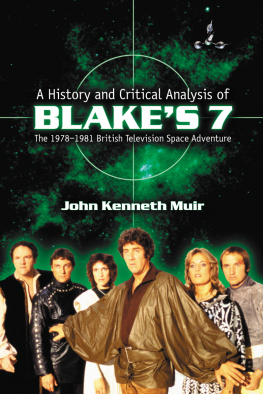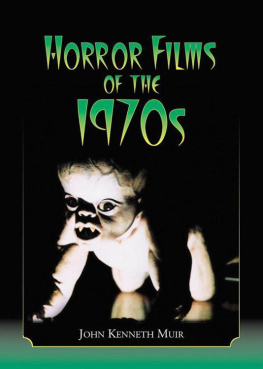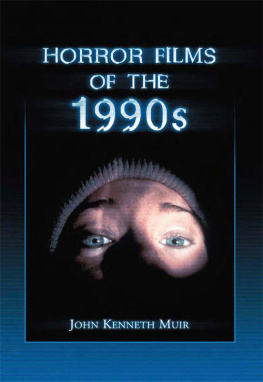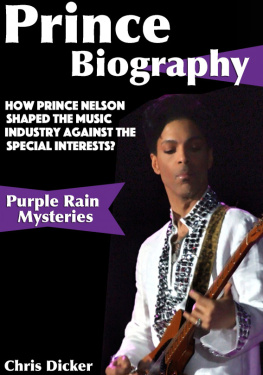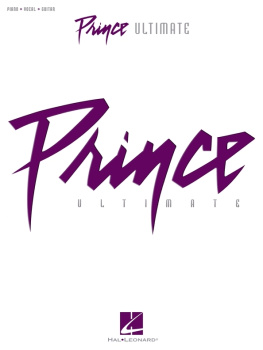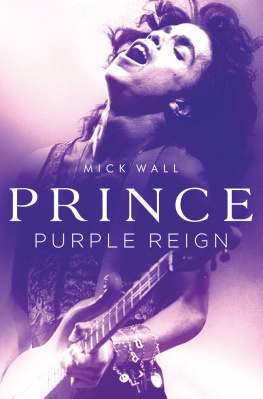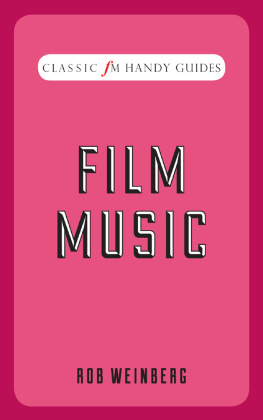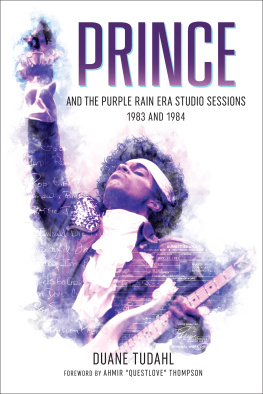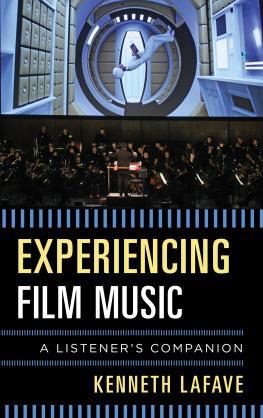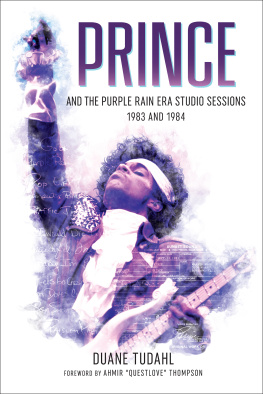
Copyright 2012 by John Kenneth Muir
All rights reserved. No part of this book may be reproduced in any form, without written permission, except by a newspaper or magazine reviewer who wishes to quote brief passages in connection with a review.
Published in 2012 by Limelight Editions
An Imprint of Hal Leonard Corporation
7777 West Bluemound Road
Milwaukee, WI 53213
Trade Book Division Editorial Offices
33 Plymouth St., Montclair, NJ 07042
The photos on pages of the insert are courtesy of Photofest. All other photos are from the authors personal collection.
Book design by Mark Lerner
Library of Congress Cataloging-in-Publication Data
Muir, John Kenneth, 1969
Purple rain / John Kenneth Muir.
p. cm.(Music on film)
Includes .
1. Purple rain (Motion picture) 2. Musical filmsHistory and criticism. I. Title.
PN1997.P886M85 2012
791.436578dc23
2012002293
www.limelighteditions.com
To my amazing mom, Loretta Muir, with deepest love and affection
Contents
As always, a huge word of thanks goes to my enterprising literary agent, June Clark. Also, my special gratitude and appreciation goes out to Purple Rain director Albert Magnoli, producer Robert Cavallo, and assistant film editor Ken Robinson for participating in this retrospective and also for proving to be so much fun and so informative to speak with.
Chapter 1
As Albert Magnolis Purple Rain (1984) commences, the famous Warner Bros. logo appears onscreen. Accompanying the familiar crest-shaped icon, we hear an announcers deep voice make a deadpan, serious introduction: Ladies and gentlementhe Revolution.
Applause and whistles of approval emanate from an unseen audience.
After a few seconds, we fade in on a solitary figure standing on a stage at the First Avenue Club in Minneapolisdominating attention. The Kid (Prince) is silhouetted in the dead center of the frame, his hands gripping a guitar. Fog surrounds this unmoving stranger, a man stationed beneath a haze of red and blue strobe lights. But he doesnt move, gesticulate, or even sing, at least initially.
Instead, this guitar hero simply speaksand the audience holds its collective breath, listening to and absorbing every last word of the monologue.
Dearly beloved, we are gathered here today to get through this thing called life The Kid declares.
The imagery transmitted and also the words uttered during this inaugural cinematic moment instantly create a powerful sense of mystery about the celebrated star of this 1980s cinematic production, an early and dazzling MTV-era twist on and update of the long-established backstage musical format.
What about this thing called life can we understand as it relates to Prince and both his personal and professional stories? What human qualities can we ascribe to this character of rock royalty?
Or put more simply: Who, precisely, is this most singular and most enigmatic of music stars?
For many movie and music fans, Purple Rain offers some important answers, or at least hints at them. And the films memorable opening salvoa staccato burst of sound and fury; a rousing, seven-minute rendition of the celebratory tune Lets Go Crazyrepresents the exact moment they first encountered and likely fell in love with the inscrutable, ultimately unknowable Prince.
The celebrated, Oscar-winning Purple Rain thus initiated in America (and in much of the rest of the world too) the so-called Purple Age of Prince, as PBS TV host Tavis Smiley perfectly termed the epoch on one memorable occasion.
Yet more than twenty-five years later, an impossible full quarter century after Princes rock n roll silver screen debut, the artist remainsto a surprising and even unprecedented degree, given the modern world of new media, social networks, and reality televisionthat same inscrutable Kid standing semiobscured in the mist.
Prince is notoriously reclusive with the media, rarely granting interviews, but his albums have sold millions worldwide despite his silence. Additionally, the artist seems to take little career counsel beyond his own, and even his storied familial background remains cloaked in shadows, mystery, and contradictions.
So Prince has brilliantly established himself as an adventurous artist and a showman of rare energy The same critic describes musical influences on Prince as diverse as Jimi Hendrix, James Brown, and Joni Mitchell.
Prince remains, in fact, a mass of personal and professional contradictions. Writing for The Nation in 1984, film critic Andrew Kopkind spelled out the strange Prince mystique with crystal clarity. His costume changes run from the itsiest bikini to Edwardian overdress. He is tender and tough, S&M, straight and gay, First World and Third, coal black, lily white and deep purple.
Music historians would likely add to that tally the fact that the man is an acknowledged musical genius, and a virtual one-man band with the ability to play twenty-three instruments.
Not everyone appreciates Prince and his contradictions, mind you. Hes made powerful enemies: conservatives and religious fundamentalists have termed him the filthiest rock n roller ever to prance across the stage, despite his oft-stated Christian belief and faith in God. No less than Tipper Goreonce nearly Americas First Ladylaunched a campaign in the mid-1980s against rock lyrics based almost entirely on her personal experience listening to Princes ribald Purple Rain hit, Darling Nikki.
Yet the women in his life have repeatedly avowed Princes core decency and chivalry. Apollonia, whom Prince once managed musically as the lead singer of Apollonia 6, has noted, for instance, his heart of gold. When you gaze across the spectrum of female music stars Prince has helped launch, from Vanity and Apollonia to Sheila E. and Sinead OConnor, his professional generosity and guidance cant be easily denied.
So Prince is a music superstar and a recluse; hes a charismatic motion-picture leading man, and hes just 55 tall (or 52 depending on the source). Hes a clean-living, hard-working, verbally conservative (meaning taciturn) rock n roller known for his vegetarianism, his religious faith, and even his hard stance against Warner Bros., the benefactor that first signed him to a million-dollar contract in 1977 and that Prince later equated with a slaveholder.
Recently, Purple Rain celebrated its twenty-fifth anniversary as a pop-culture landmark, an MTV-era backstage musical from the heyday of Flashdance (1983), Staying Alive (1983), Footloose (1984), Hard to Hold (1984), and other representatives of the form. Looking back, the film still appears the intrepid Prince fans last, best hope for understanding something personal, intimate, and true about this unusual musical individual.
Albert Magnoli and William Blinns semiautobiographical story about band infighting, personal chaos, and a violent, unpredictable home life in Minneapolis, marred by domestic abuse, seems to take much from Princes real life story, while inventing or augmenting certain aspects of his biography. This is the movie that propelled Prince into the cultural mainstream and for many remains a revealing artifact.
Today, Prince has receded largely into that mist he first stepped out of in Purple Rain, as mysterious and unknowable as ever, having once changed his name to an unpronounceable symbol and making grave pronouncements about the future of the Internet, for instance, in summer 2010.
Yet the 1984 movie remains extant: a living, breathing testament to his enduring talent and appeal, as well as the dedication of the men and women who had the audacity and know-how to imagine the artist as a full-fledged 1980s movie star, contradictions and all.
Next page

